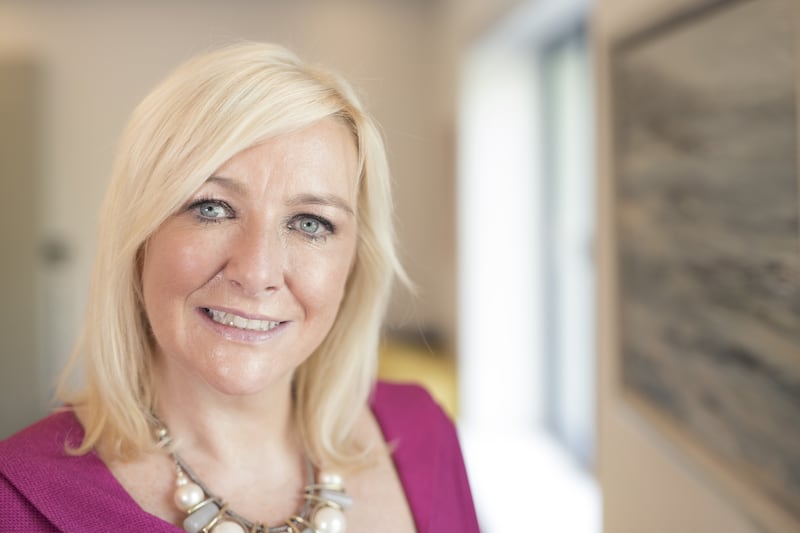Recent analysis suggests the pension gender gap is so wide that women typically need to work eight years longer than men to achieve the same pension pot in retirement.
“The two main causes of the disparity are the gender salary gap, and women taking time out of paid work,” explains Shane O’Farrell, Irish Life’s director of workplace markets and employer solutions.

The life assurance company’s data show a 22 per cent gender salary disparity, while Eurostat data show women in Ireland take an average of six years out of the workforce, largely down to maternity leave and fulfilling caring responsibilities.
But given that we know the problem, why can’t we fix it? “In theory, remedying the two primary causes of the gap is the obvious way to close it. But the reality is not so simple,” says O’Farrell.
READ MORE
“Though a lot is being done to remedy the gender pay gap, there is no quick solution. When it comes to women taking time out of work, this is largely driven by cultural conventions and historical gender norms. For example, women in Ireland take primary responsibility for maternity leave, whereas in countries like Sweden, this leave is shared as a norm. We’ve seen some great progression in terms of paternity leave recently, which should make a difference over time, but women still bear the lion’s share of the responsibility here. So, although progress is being made, no meaningful impact on the pay gap has been seen yet.”
Irish Life’s latest report provided some additional insights that might help. “Our behavioural data showed that proactivity is immensely powerful [in pensions]. Yet, our focus groups found a lack of confidence among women when it comes to pensions and finances. And obviously confidence and proactivity are inextricably linked,” says O’Farrell.
Its research shows men are 20 per cent more likely to use Irish Life’s pension portal than women, and 60 per cent more likely to pay additional voluntary contributions (AVCs).
He believes focusing on women’s financial empowerment in the workplace is key. “Financial empowerment is about boosting financial literacy, getting people comfortable with how their pension works and how different life events can impact it. Empowering women with the trifecta of knowledge, confidence and proactivity is something we think will make a big difference,” he says.
At a State level, he reckons now is the perfect time to gender-proof pension policy with Auto Enrolment (AE) coming on stream. “AE is arguably the most progressive thing to ever happen in terms of boosting pension coverage in Ireland as it means 800,000 more people will have a pension, which is a fantastic step forward. However, coverage, or simply ‘having a pension’ is rarely enough. Adequacy — nor whether your pension savings will actually be enough to live on when you’re finished working — is what really matters,” he points out.
As women generally live longer than men, they have to make “less money” last longer too.
“The option to make AVCs and plug any savings gaps is key. Which is why it is so disappointing that the option to pay AVCs is missing from the much-anticipated new AE system,” says O’Farrell.
For Suzanne Cashin, divisional director of financial planning at wealth manager RBC Brewin Dolphin, the core issue is that women still earn less than men throughout their careers. “Unless you fix the pay gap, you can’t fix the pension gap,” she says.

But it’s something organisations can fix, particularly in sectors where the gap is at its widest, which include finance, banking, insurance, law and construction. “If you go into any of the big companies and look at senior jobs, they are still predominantly male,” she says.
Taking a flexible approach to workplace and working hours will help, and the State can assist too by making childcare more accessible.
“We know already that there are huge issues for people trying to get a creche place. Between that and flexible working hours possibly being curtailed, that’s all going to feed into the pension gap,” she points out.
With pensions, the issues of lower salary and more time out are magnified over time, “because of the effect of compounding on pension growth,” says Cashin. “If you start your pension aged 35 you need to put in double the starting amount to give you the same outcome as you would if you had started just five years earlier, at age 30.”
Women are also more likely than men to stay in cash rather than invest which, in an inflationary environment, is even more damaging.
Even taking pensions as seriously as we do property would help.
“With pensions you have to focus on the 3Ps — product, performance and price. If I ask clients how much the mortgage on their apartment is, how much is their insurance, what are the management fees, they’ll know. But if they have a pension and I ask them what is it invested in, how did it perform last year, what price are they paying for it, they won’t, even though in some cases the value could be the same,” she says.
“If you’re saving for retirement in a fund that’s not suited to your needs and is not performing, then that’s going to have a drag effect. If you’re paying over the odds in price for that product, then that’s eating into your fund as well. For women, we know there is a critical issue here because of the pay gap and because of the career gaps. So being focused on those inputs is even more important.”
















